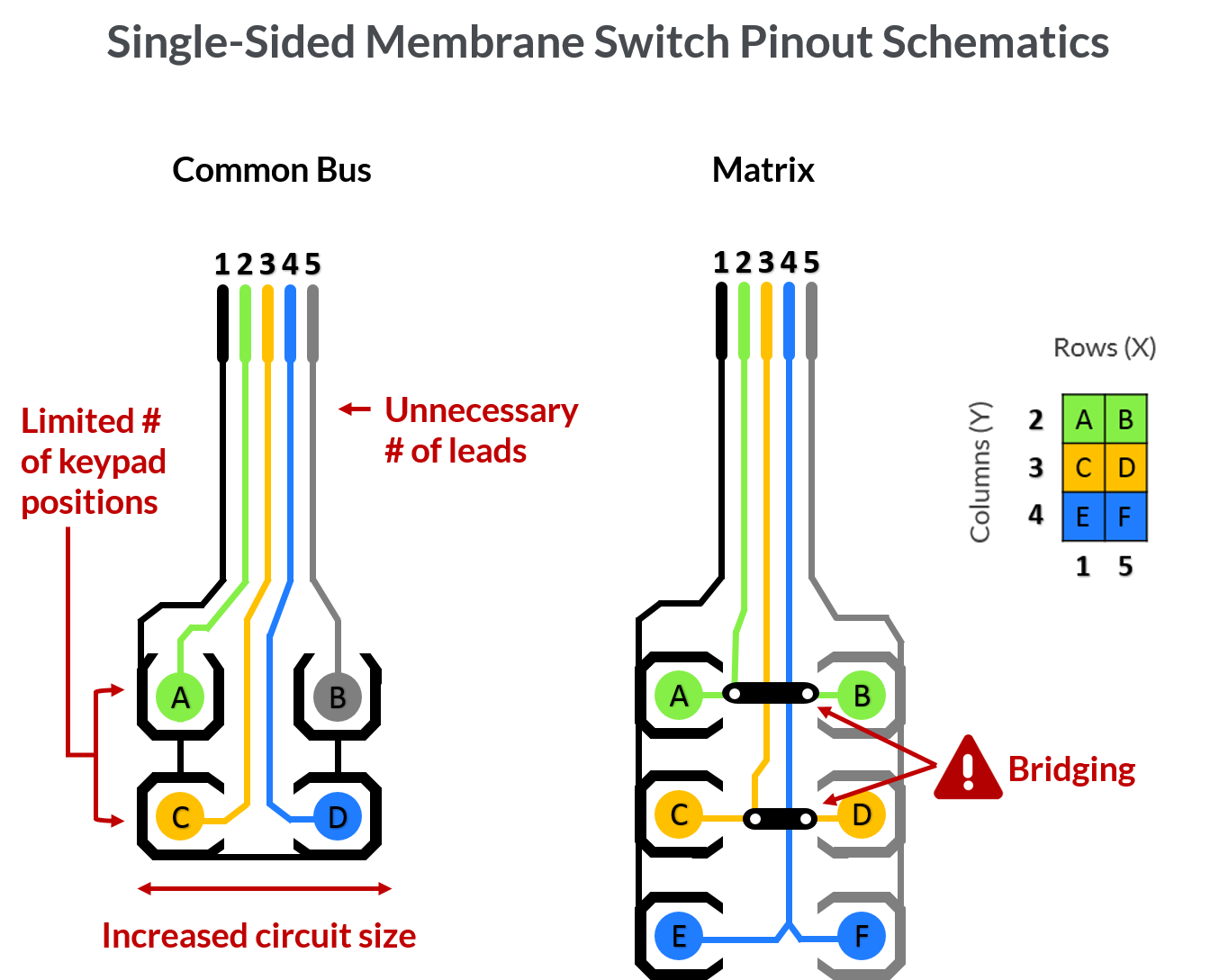How a Membrane Switch Boosts Individual Experience and Device Performance
How a Membrane Switch Boosts Individual Experience and Device Performance
Blog Article
Understanding the Functionality of Membrane Layer Switches for Interface Instruments
The capability of membrane switches represents a significant advancement in interface design, incorporating performance with aesthetic versatility. These buttons operate via a multi-layered structure that equates customer communications into electrical signals, enabling both portable formats and durability against ecological variables. As markets increasingly prioritize customer experience, understanding the nuances of membrane layer switch technology becomes crucial. What effects do these advancements hold for future applications, and how might they redefine user communications across different tools?
What Are Membrane Switches?
Membrane switches are innovative user interface tools that promote user interaction with electronic tools. These functional parts contain numerous layers, consisting of a visuals overlay, spacer, and a published circuit layer. The layout enables for a seamless assimilation into various electronic gadgets, enhancing both the aesthetic and useful facets of interface.
Membrane switches are typically used in a large range of applications, from home devices to commercial machinery and medical gadgets. Their construction normally includes a thin account, making them a suitable option for compact designs. The responsive feedback given by these switches can be crafted to satisfy specific user preferences, making certain efficient communication in between the customer and the tool.
Durability is an additional considerable advantage of membrane layer switches, as they are resistant to dirt, wetness, and chemicals, which improves their lifespan sought after environments. In addition, these switches can be customized in terms of form, dimension, and visuals style, enabling branding and user-specific functions. Overall, membrane changes represent a sensible remedy for enhancing individual experience in digital gadgets, incorporating performance with aesthetic charm in an efficient fashion.
How Membrane Switches Job
Operating on a simple concept, membrane switches use a layered building and construction to register user input successfully. Each button includes several layers, including a printed circuit layer, a spacer layer, and a top graphic layer, which are designed to collaborate perfectly. When a user presses the leading layer, it compresses the spacer layer, bringing the conductive aspects of the circuit layer right into call with each various other.
This contact develops a shut circuit, indicating the device to execute a specific feature. The design enables for numerous setups, including responsive responses, which can improve the customer experience by providing a physical sensation upon activation. The products made use of in membrane layer buttons typically include flexible substrates, such as polyester or polycarbonate, which ensure durability and durability against deterioration.

Key Advantages of Membrane Buttons

Another substantial advantage is their density. Membrane buttons are slim and light-weight, which allows suppliers to save room in their gadgets without sacrificing functionality. This function is particularly valuable in applications where weight and volume are important considerations.
In addition, membrane switches are resistant to dirt, dampness, and chemicals, improving their durability. This durability prolongs their life expectancy and decreases the requirement for constant substitutes, leading to cost savings with time.
In addition, the responsive comments offered by membrane layer switches can be enhanced to improve customer communication. They can consist of functions such as elevated buttons or distinct clicks, enhancing functionality and individual experience.
Applications Throughout Industries
User interface tools making use of membrane layer switches prevail in a wide selection of sectors, showcasing their adaptability and capability. Membrane Switch. In the medical field, membrane buttons are essential to gadgets such as analysis devices and individual monitoring systems, where their longevity and ease of cleaning are important for preserving hygiene standards. Likewise, in the automobile market, these buttons are utilized in control panel controls and infomercial systems, offering a this hyperlink sleek and modern interface for customers.
In addition, the consumer electronic devices market gain from membrane switches in appliances and handheld gadgets, where small layout and straightforward user interfaces improve customer experience. Industrial applications also take advantage of membrane changes for control panels in equipment and automation systems, highlighting their toughness and resistance to harsh atmospheres.
In the aerospace and protection sectors, membrane layer buttons are used in cabin controls and equipment, where integrity and efficiency under extreme problems are vital. Furthermore, the video gaming industry increasingly integrates membrane switches in controllers and gallery devices, adding to an appealing customer click here for more info experience. Generally, the convenience of membrane layer switches over enables their prevalent use throughout many markets, highlighting their significance in modern user interface design.
Future Patterns in Membrane Switch Technology

Furthermore, making use of advanced products, such as polycarbonate and polyester check that films, is anticipated to rise, offering boosted sturdiness and resistance to environmental stress factors. These materials contribute to the overall long life of membrane layer buttons, making them ideal for harsher industrial applications.
Moreover, the incorporation of wise innovation, consisting of IoT connection, will make it possible for membrane layer buttons to interact with other devices and systems, helping with a much more interactive customer experience. This fad straightens with the expanding need for smart gadgets throughout numerous sectors, from healthcare to consumer electronic devices.
Finally, customization choices are anticipated to expand, enabling makers to produce bespoke remedies tailored to particular user requirements and choices. These growths will position membrane switches as crucial elements in the development of interface innovation.
Final Thought
Finally, membrane changes stand for a critical improvement in interface innovation, supplying a trustworthy and functional option for diverse electronic applications. Their split building and construction promotes compact layout, while functions such as responsive responses enhance user communication. The toughness against environmental elements even more strengthens their energy throughout numerous sectors. As improvements in material science and touch sensing technologies proceed, the functionality and applicability of membrane layer buttons are anticipated to broaden, enhancing their significance in modern digital gadgets.
Report this page